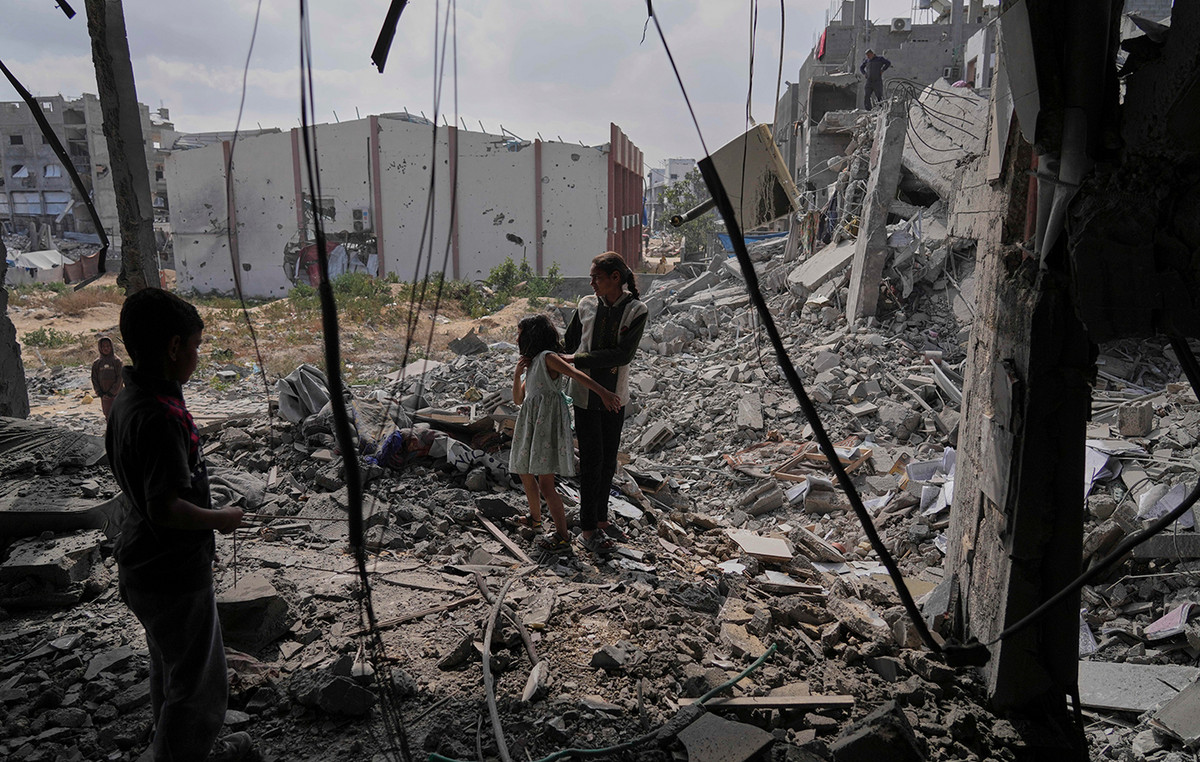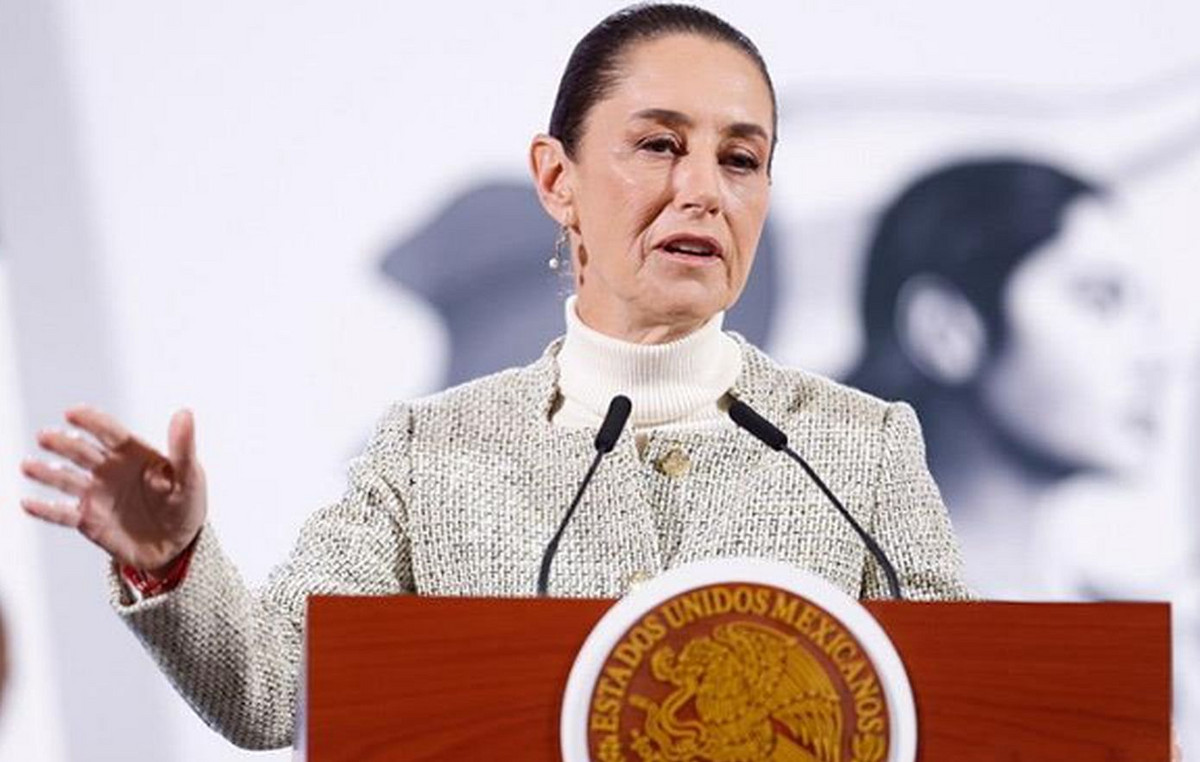The period between 2015 and 2022 is on track to be the warmest eight-year period on record, with increasing concentrations of greenhouse gases and accumulated heat, says the 2022 interim report on the state of the global climate by the Organization. World Meteorological Agency (WMO). The entity is linked to the United Nations (UN).
The document, released this Sunday (6), the opening date of the 27th United Nations Conference of the Parties on Climate Change (COP 27), in Egypt, points out that the concentrations of the main greenhouse gases – carbon dioxide, methane and nitrous oxide – once again reached record levels in 2021, with the annual increase in methane concentration being the largest on record. Furthermore, data from the first seasons indicate that they continue to increase in 2022.
Extreme heat waves, droughts and devastating floods affected millions and cost billions in 2022, the report indicates.
In the UK, the temperature exceeded 40 degrees for the first time. In Pakistan, record rains killed 1,700 people and 7.9 million were forcibly displaced, bringing the total to 33 million affected. In West Africa, the longest drought in 40 years has worsened the food insecurity situation of nearly 20 million people.
“Often, those least responsible for climate change suffer the most – as we have seen in the terrible floods in Pakistan and the deadly and prolonged drought in the Horn of Africa. However, even well-prepared societies this year have been ravaged by extremes – as seen by prolonged heatwaves and droughts across much of Europe and southern China,” says WMO Secretary-General Petteri Taalas.
Sea level rise has doubled since 1993
The report points out that the impacts of climate change are becoming more dramatic. The material reports that the rate of sea level rise has doubled since 1993. The past two and a half years alone account for 10% of the overall sea level rise since satellite measurements began nearly 30 years ago.
In 2022, the Greenland ice sheet lost mass for the 26th year in a row and it rained – rather than snow – for the first time in September. In Switzerland, 6% of glacier volume was lost between 2021 and 2022, according to initial measurements.
There are initial indications of record melting in glaciers in the European Alps for the year, with average thickness losses of between 3 and more than 4 meters measured across the Alps, considerably more than in the previous record year of 2003, according to the document.
“It is already too late for many glaciers and the melting will continue for hundreds, if not thousands of years, with major implications for water security. Although we still measure it [aumento do nível do mar] in terms of millimeters per year, this adds up to half to one meter per century and this is a major long-term threat to many millions of coastal inhabitants and low-lying states,” the WMO Secretary-General warned.
According to the document, 2022 will be “only” the fifth or sixth warmest year – although a rare Lá Niña, which caused cooling, has contributed to keeping the temperature relatively low.
“However, this does not reverse the long-term trend: it is only a matter of time before there is another hottest year on record,” he says.
Currently, the average global temperature in 2022 is estimated to be around 1.15 degrees Celsius. [1,02º a 1,28°] above the pre-industrial average (1850-1900), as estimated by the Sixth Assessment Report of the Intergovernmental Panel on Climate Change (IPCC).
In comparison, the ten-year average for the period 2013-2022 is estimated at 1.14th [de 1,02º a 1,27] above the pre-industrial base. From 2011 to 2020, the average was 1.09° above that recorded between 1850 and 1900.
Ocean heat reached record levels in 2021 (the last year assessed), with the rate of warming particularly high over the past 20 years – the seas store about 90% of the accumulated heat from human greenhouse gas emissions and 55% of the ocean surface experienced at least one marine heat wave in 2022.
Global population feels changes
Climate change has led to catastrophe in different parts of the globe, according to the WMO. In East Africa, rainfall has been below average in four consecutive rainy seasons, the longest in 40 years, with indications that the current season could also be dry.
With persistent drought and other aggravating factors, an estimated 18.4 to 19.3 million people faced a food “crisis” or worse levels of acute food insecurity before June 2022, the report says. Aid agencies warn that another below-average season is likely to result in a failed harvest and exacerbate food insecurity in Kenya, Somalia and Ethiopia.
The southern African region was hit by a series of cyclones over the course of two months earlier in the year, hitting Madagascar the hardest with torrential rains and devastating flooding. In September, Hurricane Ian caused extensive damage and loss of life in Cuba and southwest Florida in the United States.
Photos – the damage caused by Hurricane Ian
Record rains in July and August led to massive flooding in Pakistan, affecting 33 million people, following an extreme heat wave in March and April in India and Pakistan.
China had the longest and longest lasting heat wave since national records began and the second driest summer on record. The Yangtze River in Wuhan reached its lowest level on record in August.
Large parts of Europe suffocated in repeated episodes of extreme heat. The UK recorded a new national record on July 19, when the temperature exceeded 40°C for the first time. This was accompanied by a persistent and damaging drought and wildfires. European rivers, including the Rhine, Loire and Danube, have dropped to critically low levels.
“Increasingly extreme weather makes it more important than ever to ensure that everyone on Earth has access to life-saving early warnings,” says Petteri Taalas of the WMO.
Source: CNN Brasil
I’m James Harper, a highly experienced and accomplished news writer for World Stock Market. I have been writing in the Politics section of the website for over five years, providing readers with up-to-date and insightful information about current events in politics. My work is widely read and respected by many industry professionals as well as laymen.







